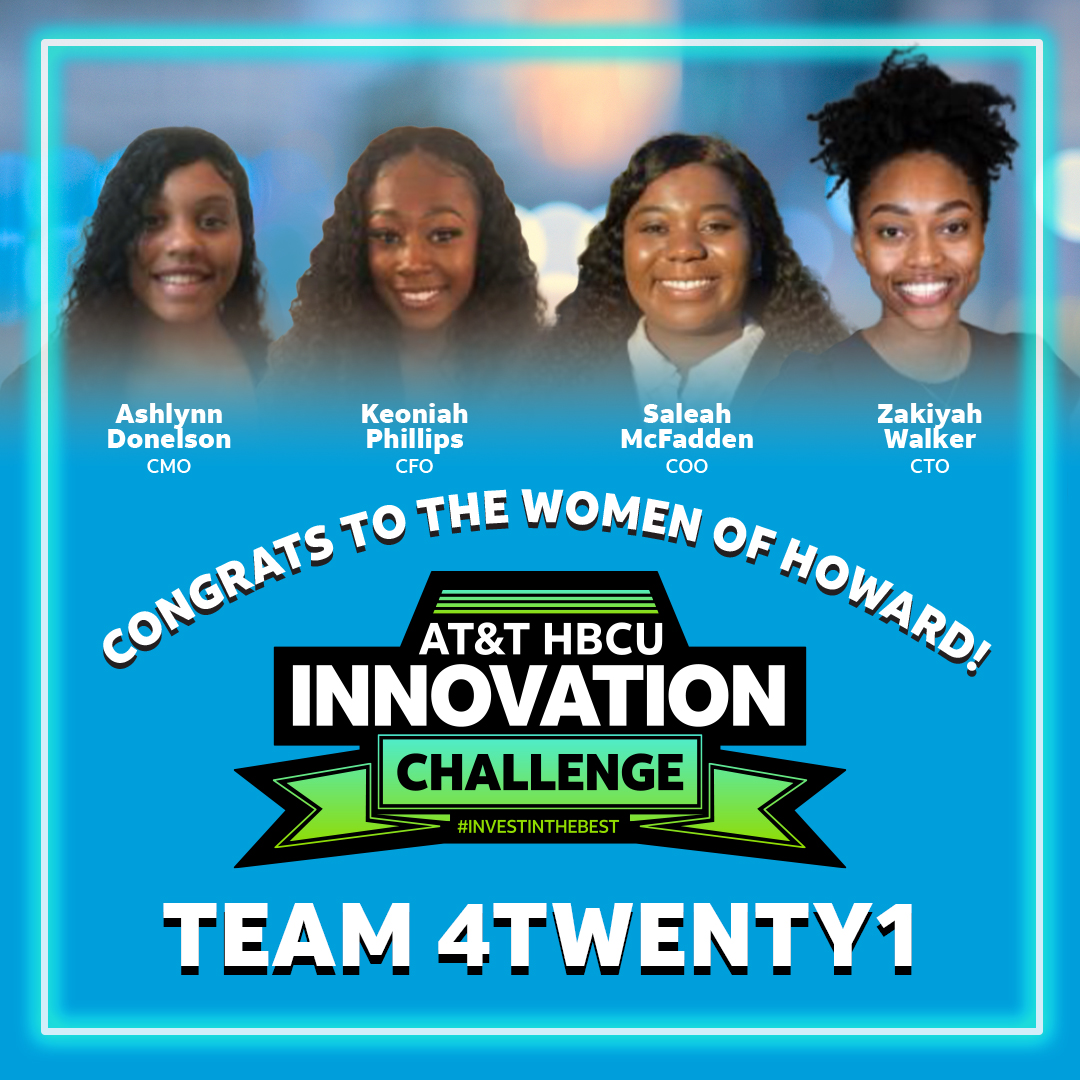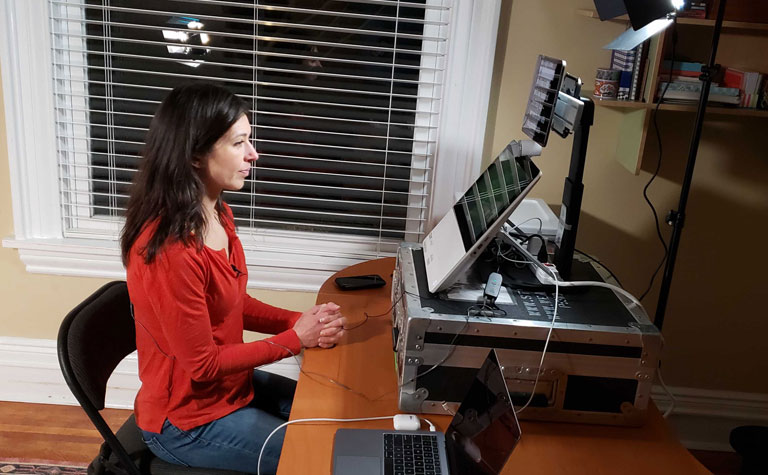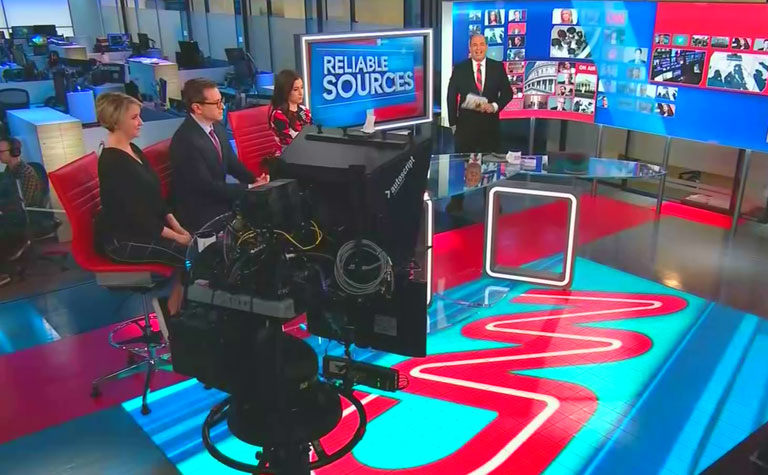AT&T and WarnerMedia make a Splash at AfroTech World with Fireside Chat, $50K Prize for HBCU Students, and Robust Recruiting Efforts
This week, AT&T and WarnerMedia virtually joined the fifth annual AfroTech World – one of the largest multicultural tech conferences in the United States. The event brings together engineers, venture capitalists, recruiters, technologists and culture enthusiasts from all over the world to exchange ideas and build a strong Black tech community.
AT&T CTO Jeremy Legg and Warner Media VP of Content Transmission Renard Jenkins made their inaugural visit for a candid conversation covering their personal journeys in championing diversity and inclusion, along with how they tackled the extraordinary challenges brought on by the pandemic. AT&T and WarnerMedia had to throw out the playbook and come up with innovative solutions to help tens of thousands of employees transition to working from home almost overnight, launch HBO Max on schedule in May, and keep the news on-air by quickly building at-home studios for anchors.
Today also marked the exciting conclusion of AT&T’s HBCU Innovation Challenge, in which 25 student teams from 17 Historically Black Colleges and Universities (HBCU) competed by developing innovative solutions that use available AT&T 5G bandwidth capacity to help our communities. The solutions could be for healthcare, education, low-income communities, public safety or another focus area of their choosing.
Three finalists were invited “on stage” to AT&T’s AfroTech World booth, where Howard University’s “4twenty1” was crowned first-place and winner of the $50K prize. Their proposal was to create the “AT&T 5G Academy,” an app-based learning platform that allows high school students to earn points while learning about finance, marketing, computer science, engineering and life skills. The points could then be redeemed for credit to purchase an AT&T 5G phone or AT&T 5G hotspot service.
The two other finalists, “bEar Buds” of Morgan State University and “The Spell” of Spelman College, were in for a surprise. As second- and third-place finishers, respectively, they were awarded previously unannounced awards of $20K and $10K. bEar Buds’ solution would use machine learning and computer vision technology to translate both Black American Sign Language (BASL) and American Sign Language (ASL) into plain text or audio. The Spell’s proposal would leverage 5G to help rural hospitals power remote healthcare calls, monitor a patient’s heart rate, detect falls and determine the best course of action for a patient using artificial intelligence.

Our recruiting team was also hard at work at AfroTech actively networking with attendees and collecting resumes to find our future leaders at AT&T and WarnerMedia.
Check out highlights from Legg and Jenkins’ fireside chat as well as a video of the full discussion below.
Legg: In the spirit of AfroTech World, I wanted to kick things off by asking you about your personal journey in tech as a person of color and if there’s any advice you’d want to share with attendees today.
Jenkins: My journey has been filled with lots of trials that, unfortunately, I feel many people of color have experienced for quite some time. Perseverance enabled me to continue to move forward, along with having advocates who understood what I brought to the table and made sure I had a place at the table.
Now that I’m where I am today, I feel it’s important to make sure I am opening doors for people who look like me as well as for those who don’t. We don’t get here by ourselves, so when you do get a space to play, make sure you’re helping others get there too.
Jenkins: I know you have strong convictions on diversity and inclusion. Tell us about your personal journey and how it has manifested into action in the workplace.
Legg: I grew up in a family of strong female leaders. My now 100-year-old grandmother was literally a Rosie the Riveter, building ships in Richmond back in World War II, and my mother was a professor. I’ve had many conversations over the years about the gender inequality issues they faced in their careers.
Around five years ago, though, I realized I was not living all my core values. While I certainly espoused racial diversity in addition to gender diversity, I don’t think I was following through enough. I was called out on it by my son, who was 14 years old at the time, when he brought home his first girlfriend who was African American. While my reaction wasn’t negative in any way, the fact that I didn’t expect it made me embarrassed for myself and made me realize I was only living half of my core values. I committed to making a difference from that point forward. I had an awakening and I needed one.
From a work perspective, AT&T has done great things and is has been recognized through a variety of diversity and inclusion awards. Our workforce consists of 45 percent people of color and 34 percent women, making us one of the best when compared to other technology, media and telecommunications companies.
With that said, there are still issues observable across corporate America. As you look further up the ladder, representation of women and people of color declines. We need to be deliberate about putting mechanisms in place that don’t perpetuate or create biases, and that level the playing field, which is what I believe people really want. Someone doesn’t want to be given a job because they are a woman or a person of color – they want to be given a job because they are qualified for the job. That’s where we must level the playing field around the opportunities presented and, unfortunately, that takes deliberate action.
Legg: Tell us about some of the efforts that WarnerMedia is embarking on to achieve greater diversity in storytelling.
Jenkins: The important thing is to look at what voices we have at the table when it comes to creation of content. I’m happy to say there are groups within WarnerMedia looking at the ways we create content and the messages within that content, making sure there are not only diverse voices but diverse messages.
If you look back at content historically, some of it when played today can be extremely offensive. What was considered the norm at the time is no longer the norm. WarnerMedia wants to be at the forefront of looking at that issue, so we’re doing our own health check to make sure what we put out into the world is balanced and that we’re sensitive to how it affects people of color and all people.
Jenkins: Shifting gears to the pandemic, which has upended almost every aspect of day-to-day life. Tell us about how your team pivoted almost overnight to help tens of thousands of employees transition to working from home?
Legg: I remember one of my last days in the office – it was like time had frozen. There were half-full coffee cups on desks, sweaters on chairs, printouts still on printers.
We had to sprint to ramp up VPN capacity, bandwidth, and training in an incredibility condensed timeframe. All our tools for collaboration, access and connectivity quickly became our lifeblood, while everyone’s local IT person quickly became their best friend.
No one could be sure how it was going to turn out, with some predicting productivity would decline precipitously, but we all adapted and productivity might have even gone up in the near term. For people that already knew what they needed to work on, many found themselves with more condensed sets of time to do it, as they were spending less time on things like commuting and lunch at the office. I think we’re all going a little batty now but initially it turned out better than we would have expected.
Legg: Tell us about WarnerMedia’s marquee product in HBO Max and how things have been going since launch.
Jenkins: HBO Max has continued to grow and evolve, combining the Warner archive with HBO content to form a true platform. I’ve personally enjoyed binge-watching my favorite shows like Lovecraft Country, Perry Mason, and Game of Thrones.
Jeremy, you were able to launch HBO Max before you moved from WarnerMedia to AT&T. Tell us about that.
Legg: I remember when we were launching it, we were sitting in a room with our CEO and it was the debate you might expect, “Is this the best possible time to launch this product or the worst possible time?” It was May of this year and the pandemic was in its early stages. There was a lot of uncertainty and concern.
Yet, as they say, you miss 100 percent of the shots you don’t take. At the end of the day, we decided we’d rather have a product launched in order to start gaining market share as soon as possible.
Legg: Switching gears, the pandemic obviously changed things dramatically from a live TV perspective. How did you go about changing the production model as studios emptied and you then had to support Chris Cuomo in his basement and Anderson Cooper in his living room?
Jenkins: I joined the team in February and my first assignment was to get people out of the building. Our goal was to give viewers a seamless experience in which they would never be able to tell that our anchors were at home and not in our studios.
The production engineering team moved quickly to build at-home studios. They were able to access some anchors’ homes while others were sent equipment to set up themselves. A graphic LED behind the anchors, along with lighting teams in the field, enabled a clean experience that was largely indistinguishable from the studio.
In the three-week timeframe we had to set everything up, the team came together in an amazing way. There were no egos involved; everyone rolled up their sleeves and got to work. WarnerMedia truly has collaborative spirit.



Legg: In closing, let’s discuss the future of AT&T and WarnerMedia from a technology perspective.
Jenkins: For WarnerMedia, [from a content transmission standpoint] the pandemic is creating a greenfield for teams as they figure out how to change their production styles and workflows for the new environment. While the robots aren’t taking over just yet, based on all the work that had to be accelerated over the last 6-7 months, I do think we are moving toward software-defined workflows and the use of machine learning to automate. By taking the more mundane tasks off the plate of humans, we create greater efficiency and free up time for creativity.
Legg: For AT&T, on the immediate horizon is the rollout of 5G – an enormous event for the company, the broader wireless industry, consumers, and consumer device manufacturers. Our 5G network is now nationwide and will open possibilities for a host of new services from IoT to AR. There’s going to be major seed change in terms of consumer device technology as new chipsets are needed for 5G. The new 5G iPhone launched recently and Samsung has a number of 5G products in the market.
At the same time, a significant transformation is occurring within AT&T as we solve for challenges many companies are facing today – technical debt, legacy technology, and cloud migration. While I tackled these challenges at WarnerMedia, the difference at AT&T is scale. There are around 135-140 petabytes of data that flow across the wireless network every day – it’s a scale that is hard to wrap your head around. Our unique twist on the traditional cloud migration will allow us to leverage AI and ML in the ways we want to.
Further, we’re doubling down on consumer experience, whether it’s the way people buy our products through ecommerce, visit our retail stores, or interact with customer service. We want to create a single view of the customer, linking all our infrastructure and services on the backend. This will enable us to create a truly personalized experience, so that when an issue arises, we understand it quickly without having to send a team of technology-forensic experts to comb through infrastructure to solve it.
The backend operations have always been one of my favorite things. These are just a few of the fun things we get to geek out on at AT&T.
PR Archives: Latest, By Company, By Date